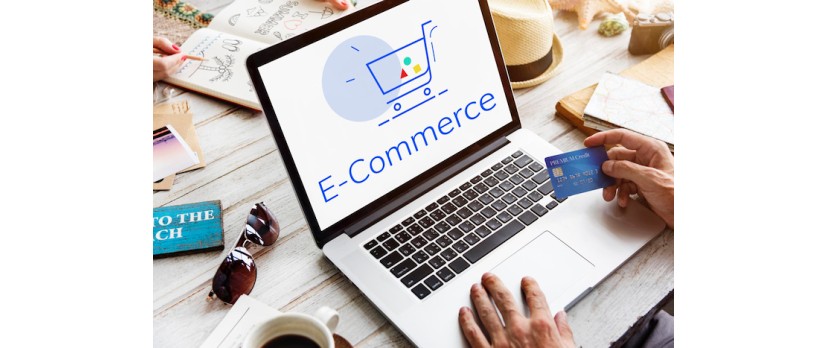An engaging e-commerce requires more than good product photos and fast loading speeds as shoppers expect more than just a transactional interface—they want to be pulled into a brand story, one scroll at a time.
That’s where scroll animations come in. When used with purpose, they turn a static product page into an immersive journey highlighting your brand, guiding attention, and increasing conversions.
Photo by Canva Studio on Pexels
Webflow makes it easier than ever to add scroll-based interactions without JavaScript, with built-in animation tools that let you design expressive, dynamic e-commerce pages that move in sync with user behavior.Best of all, they don’t require you to sacrifice performance or usability if used correctly.
Understanding Webflow Scroll Animations
Scroll animation tools allow you to bind movement, opacity, size, and other visual properties to scroll events. What are the benefits?
Design animations that only trigger when a user reaches a certain section, or that progress as the user continues scrolling.
Create a sense of motion and progression, keeping visitors engaged.
Done right, scroll animations help structure your content in a way that feels intuitive and satisfying to move through.
Webflow supports different kinds of scroll animations, including fade-ins, parallax movements, scale changes, and pinned elements—each of these can be used to guide the user’s attention to specific sections, products, or calls to action.
No matter the intent, these effects add pacing and rhythm. You can also stack multiple effects for layered storytelling—a fade-in combined with a slide, for example, can elevate an otherwise simple interaction.
Trigger Points and Scroll Timing
Triggers are essential to good scroll animation. In Webflow, you can set animations to activate when an element enters or exits the viewport, or when a specific scroll percentage is reached.
Getting the timing right ensures that animations feel smooth rather than jarring. Well-timed triggers help manage user expectations, building anticipation and providing visual reinforcement for important information.
Visual Hierarchy Through Motion
Motion can highlight important content and create a visual hierarchy without cluttering the design.
Subtle scroll-triggered changes in text size, background color, or positioning help users understand what to look at first, improving usability and keeping bounce rates low.
Rather than relying solely on static layouts or color blocking, you can guide users dynamically through your message.
Enhancing Product Discovery with Scroll-Based Storytelling
In e-commerce, storytelling is around your products and how they solve a specific problem or elevate a lifestyle. With scroll-based storytelling, you can craft a narrative that unfolds naturally.
To start off, create a linear flow, thinking of your page as a timeline. As users scroll, introduce the product, explain its features, show how it’s used, and then lead them to the purchase button.
Scroll animations guide this journey, ensuring each step is revealed with the right emotional pacing—with the support of a top-rated design team on demand, you can fine-tune each interaction for maximum impact and brand alignment. The more natural the rhythm, the more likely users are to stay engaged through to the end.
Contextual Demonstrations
Instead of relying on plain product specs, use animations to show the product in use. Animate images or short video loops into view to demonstrate key features.
For fashion brands, this might mean revealing different looks. Whereas, for tech products, animated diagrams or UI overlays can explain functionality. You give users context, which builds confidence and clarity before a purchase.
Sequential Product Launches
If you're releasing multiple items, scroll animations can stagger their appearance. This keeps users focused and encourages exploration. It also builds anticipation, especially when combined with micro-interactions like hover effects or ambient background shifts. Introducing new items one at a time allows you to control the narrative and emphasize each product's unique qualities.
Improving User Retention Through Micro-Animations
Micro-animations triggered by scroll actions keep users engaged and signal that your brand pays attention to detail. They also make the interface feel alive and responsive, reducing drop-off during longer browsing sessions. These touches help bridge the gap between polished aesthetics and functional usability.
Add subtle indicators that show users how far they've scrolled.
Progress bars, background fades, or step highlights are all ways to make long pages feel manageable—this gives users a clear sense of movement and control.
When users know they’re making progress, they’re less likely to abandon the experience halfway through.
Interactive Icons and Callouts
Icons that animate slightly as they enter view can direct attention without overwhelming the screen. Use them to highlight unique selling points, shipping perks, or sustainability practices. Paired with short copy, they keep users reading and scrolling. A quick animation can do more than a paragraph of text when used with intention.
Reinforcing Brand Aesthetic
Scroll-triggered animations can echo your brand identity. A natural brand might use flowing transitions and fade-ins, while a tech brand might use sharp zooms and opacity shifts.
Consistent motion language enhances brand recall. Aligning motion style with your tone of voice and visuals strengthens your identity and builds trust.
Performance and Usability Considerations
Animations should enhance, not hinder. Overuse can harm performance, especially on mobile. Fortunately, Webflow gives you control over breakpoints and animation intensity to strike the right balance. Prioritizing a responsive experience across all devices is key to success.
Prioritizing Mobile Optimization
Test animations on smaller screens. What looks smooth on desktop might lag on mobile. Webflow allows you to disable or adjust interactions per device, ensuring a smooth user experience. Simplicity often works best on mobile—you don’t need to replicate the entire desktop effect set.
Lazy Loading and Asset Management
Heavy assets like high-resolution images or background videos should be lazy-loaded. This prevents long initial load times and keeps scroll interactions fluid. Compressing and optimizing assets before upload is essential. Asset weight directly affects bounce rate, so monitor performance continuously.
Accessibility and Motion Sensitivity
Not all users enjoy motion. Always include reduced motion settings for users with vestibular sensitivity. In Webflow, you can conditionally disable interactions if the browser indicates a reduced motion preference. This helps ensure that your store is usable and respectful of all visitor needs.
Turning Scroll Interactions into Conversions
Animations should serve a purpose: guiding users toward conversion. Whether that’s adding to cart, signing up, or learning more, scroll interactions can be used strategically to increase engagement. Done well, they feel like a natural part of the flow rather than a distraction.
Sticky CTAs and Persistent Prompts
Use scroll-triggered pinning to keep call-to-action buttons in view. You can also animate CTAs into view just as the user finishes reading a section, providing a natural prompt to take the next step. These kinds of cues can drive up click-through rates without needing aggressive copy or intrusive popups.
Highlighting Scarcity and Urgency
Animations can draw attention to time-limited offers or low stock alerts. Use pulsing effects, countdowns, or motion blurs to visually emphasize urgency without sounding pushy. These motion cues subtly communicate importance without overwhelming users.
Tying Animation to Metrics
Always connect design decisions to data. Use tools like Hotjar or GA4 to track scroll depth, interaction points, and abandonment sections. If users stop scrolling before a key section, adjust the pacing or visual cue of your scroll-based effects. Iterate over time to find the sweet spot between engagement and friction.
Conclusion
E-commerce needs to emulate a story, an experience, and a journey. Scroll animations in Webflow give you the ability to craft that journey with precision and creativity.
Instead of static pages that users skim, you can build immersive experiences that feel cinematic, thoughtful, and alive. Every movement becomes a chance to say something meaningful.
With Webflow, the barrier to entry is low. Whether you're a solo founder or a creative agency, scroll animations are a practical tool that can deliver both beauty and business impact. Your e-commerce store can now be a living, breathing brand encounter.


Login and write down your comment.
Login my OpenCart Account